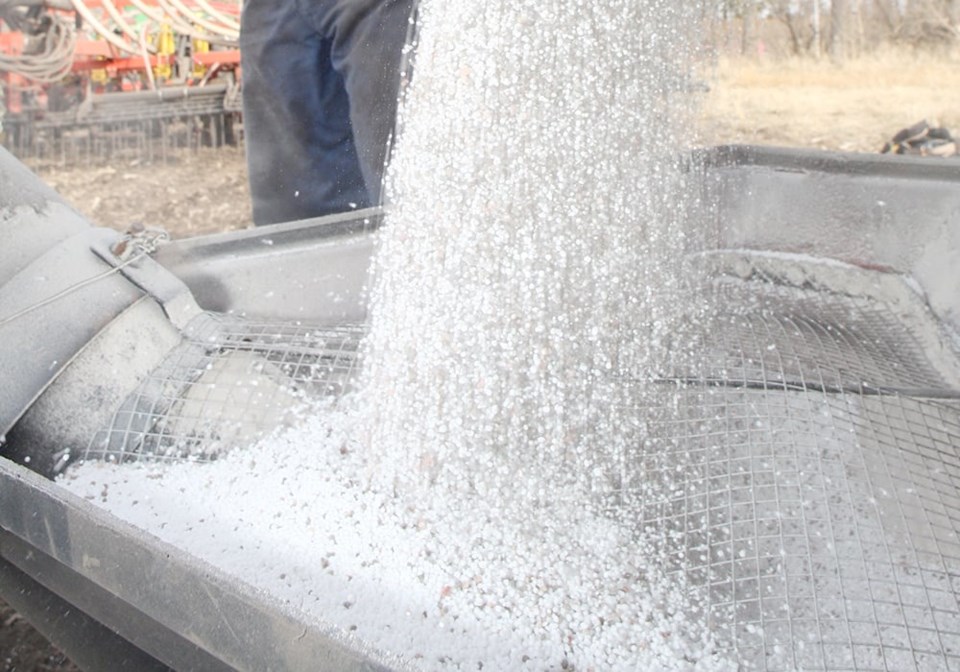REGINA — Agriculture Canada says it will do better after a report from the auditor general’s office criticized its attempts to deal with climate change.
said the department has known since 2015 that it had to address greenhouse gas emissions. However, programs to help farmers do that didn’t roll out until 2021 and were then plagued by delays, lack of clear targets and poor results monitoring, the report said.
It also said the government’s climate plan set the fertilizer emissions reduction target of 30 per cent below 2020 levels by 2030 without consultation.
“One consequence of this lack of consultation was that some sector stakeholders interpreted the target as an absolute reduction of 30 per cent in fertilizer use, rather than a 30 per cent reduction in emissions from improved fertilizer application techniques,” the report said.
The report, which audited the three climate programs that the department has introduced, said an overarching strategy to guide its work should be implemented as soon as possible.
Agriculture Canada said the Sustainable Agriculture Strategy will be completed this year.
Canadian Federation of Agriculture president Keith Currie said the report confirms what the organization has recommended through the SAS development process. This includes the need for policy coherence across the many agri-environmental policies and programs that exist, identifying gaps and targets, and setting a clear vision for the future.
“For this to succeed, the SAS needs to articulate concrete deliverables that identify clear accountabilities for government, producers and the broader private sector,” he said.
But with only six growing seasons left to meet 2030 targets, both Currie and the report note that substantial progress is required. The government has to invest in measures that support the sector’s potential to provide solutions, he said.
“However, we need to ensure the timelines, performance metrics and plans to monitor progress under the SAS are grounded in clear, science-based pathways that support farmer competitiveness,” said Currie.
The National Farmers Union, which does a significant amount of work on climate change and largely supports the government’s efforts, said the department must finalize the SAS before harvest.
“And they need to show farmers they’re serious by allocating significant funding for effective programs to reduce emissions, speed adaptation and build resilience,” said Darrin Qualman, the NFU’s director of climate crisis policy and action.
He said the fact the Agricultural Clean Technology Program, On-Farm Climate Action Fund and Living Labs programs are oversubscribed shows farmers’ interest in doing their part.
Conservative agriculture critic John Barlow said the report was “pretty damning” and confirms what his party has been saying.
“These policies that the Liberal government are coming up with that have a direct impact on Canadian food production and farmers and ranchers … they had no consultation, no strategy and no understanding what the potential consequences would be,” he said.
Barlow said he doesn’t expect much to change, despite the department saying it will improve programs and implement better targets and data collection.
“The horse is already out of the barn. These policies have already been implemented. I fully don’t expect the Liberals to backtrack on any of their radical policies that they’ve put out there,” he said.
He added the report confirms for producers that the Liberals do not see food production as a priority.
One notable finding in the audit was the department’s 2022 estimate that greenhouse gas emission reductions under the 2030 reduction plan would be 13.07 megatonnes, but that number has since been reduced to 11.21 Mt.
That’s because it initially included reductions estimated from tree planting on agriculture lands, which have been removed.
Agriculture Canada’s climate change mitigation programs are expected to contribute 11.21 megatonnes of carbon dioxide equivalent reductions in agricultural greenhouse gas emissions by 2030. The Commissioner of the Environment and Sustainable Development in the federal auditor-general’s office said the department had not previously made this information public and recommended doing so to provide more transparent information to the agriculture sector to explain federal policy development and decisions.
“In our view, making this information publicly available would provide more transparent information to the agriculture sector to explain federal policy development and decisions,” the report said.
The report also recommended the department make public the emissions reduction cost per tonne by mitigation practice in order to be more transparent.
Using 2021 data, the department has projected agriculture will have to reduce or sequester the carbon dioxide equivalent of 51 Mt to achieve 2050 targets.
Although AAFC acknowledged that significant data and funding gaps remain to map out a feasible pathway to reach net-zero emissions by 2050, we found that it had no long-term strategy for how it would achieve the 2030 or 2050 goals,” the report said.
With regard to the fertilizer emissions reduction target, the department had said it would establish voluntary agreements with farmers, fertilizer makers and other stakeholders. None had been created by January 2024. And, the report said only about 20 per cent of Canadian farmers have so far adopted three identified best management practices to reduce fertilizer emissions.
The three available programs have not been adequately tracked to validate reductions and data, and the audit found gaps in recipient reporting.
In addition, the audit said the department assumed that all expected emission reductions, apart from fertilizer emission reductions, would be permanent but had no evidence that would happen.
The department said its SAS will be “evergreen” and create policy coherence. It will include measurable goals and outcomes and identify ways to address outstanding data gaps.
It plans program improvements for OFCAF by Sept. 30, for the ACT program by Sept. 30, 2025, and for the Living Labs program another year later.




